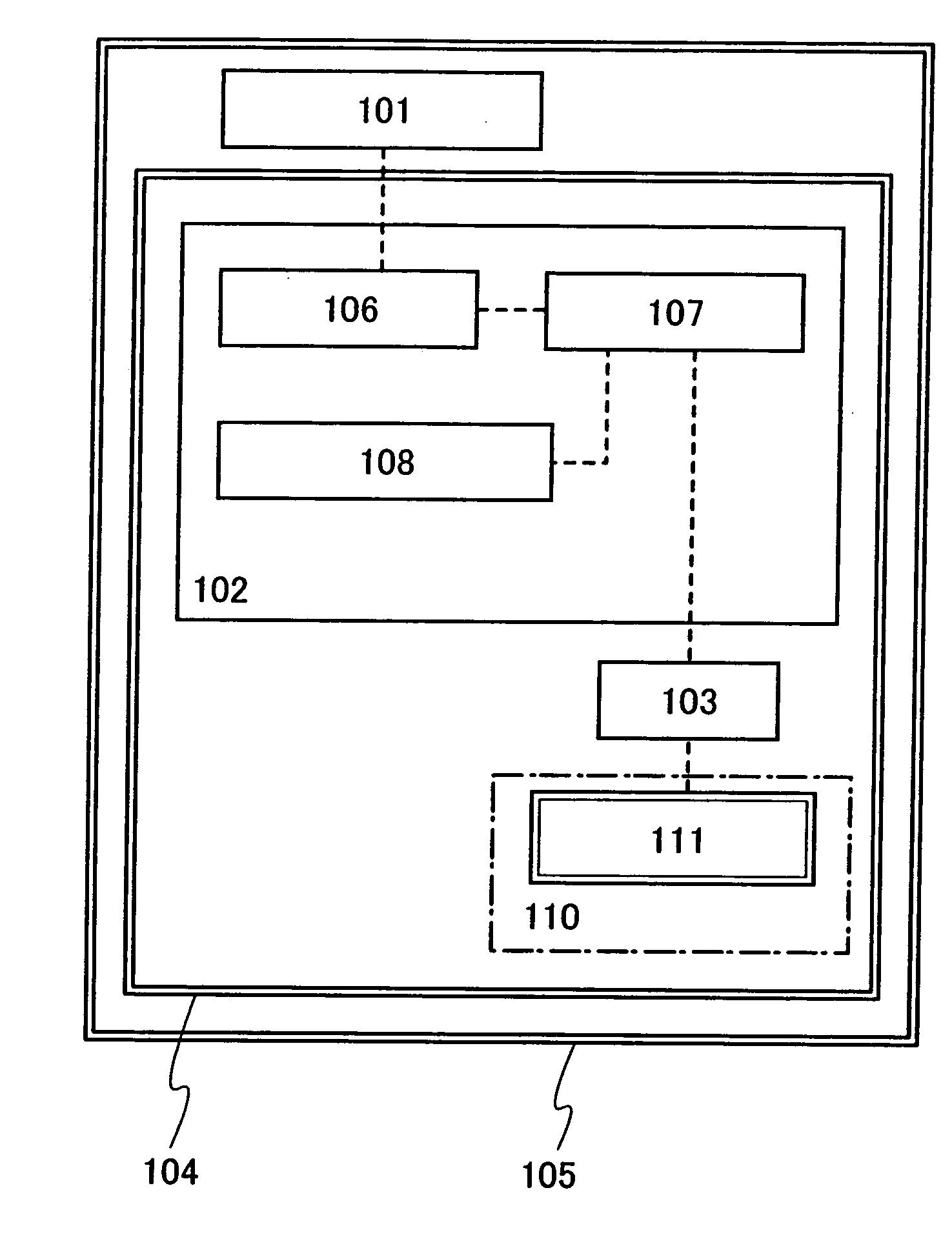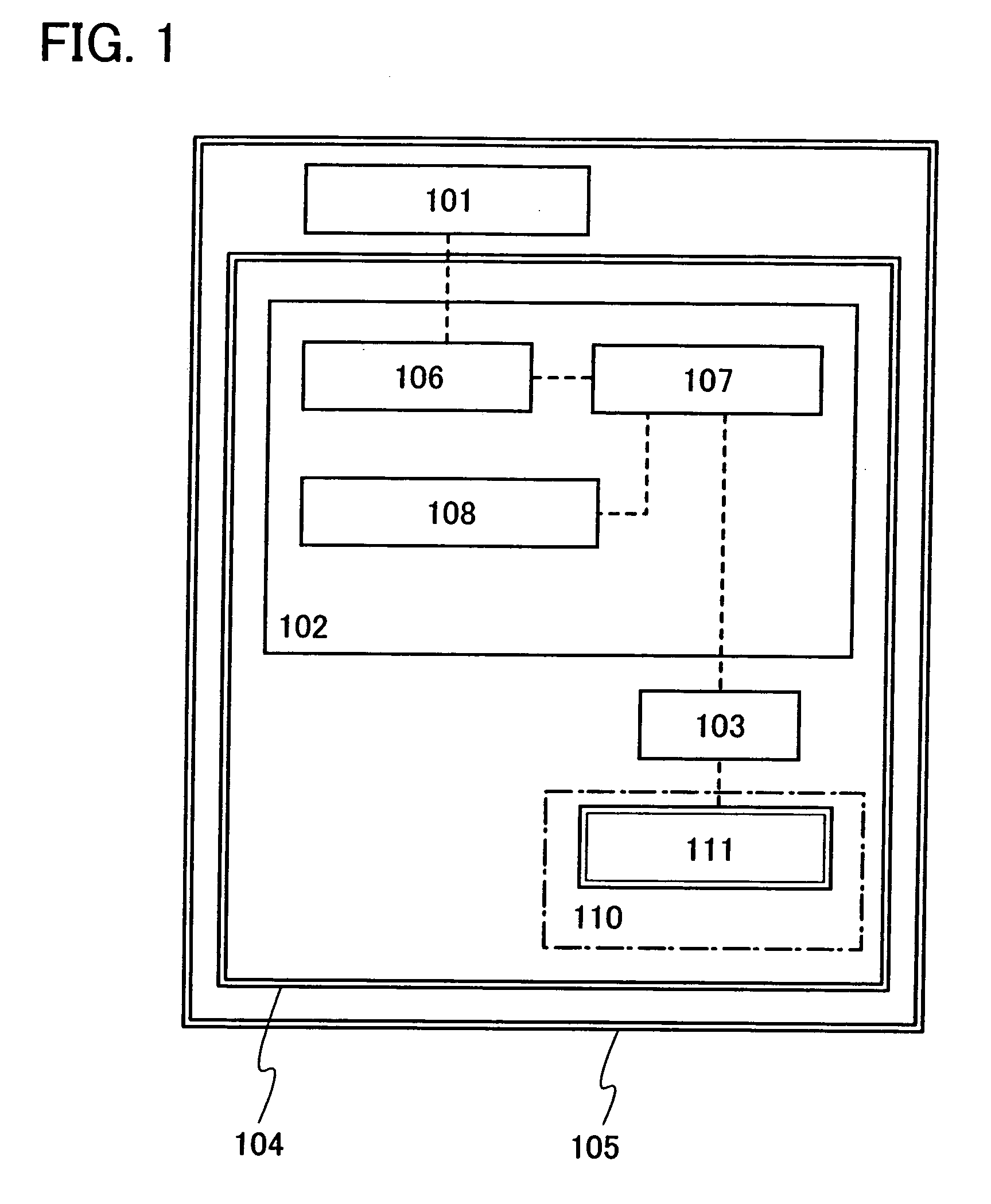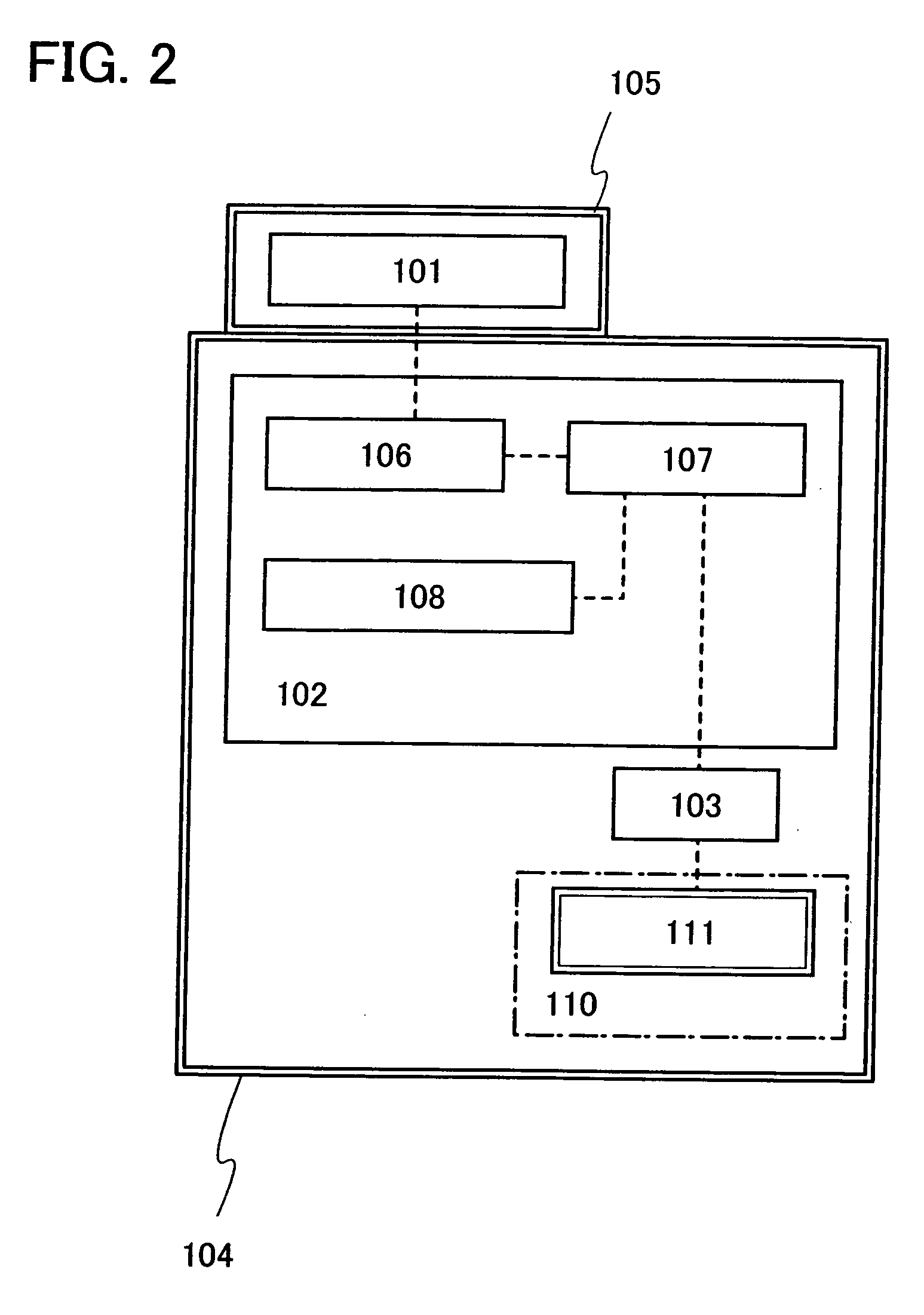Charging device
a charging device and charging technology, applied in the direction of burglar alarm mechanical actuation, instruments, transportation and packaging, etc., can solve the problems of ineffective utilization of energy for electric products, inability to completely eliminate electromagnetic waves from home appliances, waste of electric power by electric products, etc., to prevent deterioration or destruction, the effect of saving energy
- Summary
- Abstract
- Description
- Claims
- Application Information
AI Technical Summary
Benefits of technology
Problems solved by technology
Method used
Image
Examples
embodiment mode 1
[0038]A structure of a charging device of the present invention will be described.
[0039]FIG. 1 is a block diagram showing a structure of the charging device of the present invention as an example. The charging device shown in FIG. 1 includes an antenna circuit 101, a charging circuit 102, a terminal 103, a first protective material 104, and a second protective material 105. The charging circuit 102 includes a rectifier circuit 106, a power supply circuit 107, and a charge control circuit 108.
[0040]In addition, FIG. 1 shows an object to be charged 110 which receives supply of electric energy from the charging device of the present invention. The object to be charged 110 is stored in a storage portion with connected to the terminal 103. The terminal 103 may be provided in the storage portion or outside the storage portion. The object to be charged 110 includes a rechargeable battery 111, and the object to be charged 110 can be charged with the use of electric energy from the charging ...
embodiment mode 2
[0051]A structure of a charging device of the present invention will be described. FIG. 3 is a block diagram showing a structure of a charging device of the present invention as an example. The charging device shown in FIG. 3 includes a first antenna circuit 201, a charging circuit 202, a second antenna circuit 203, a first protective material 204, and a second protective material 205. The charging circuit 202 includes a rectifier circuit 206, a power supply circuit 207, an oscillation circuit 208, and an oscillation control circuit 209.
[0052]In addition, an object to be charged 210 that is an electronic appliance which receives supply of electric power from the charging device of the present invention is shown in FIG. 3. The object to be charged 210 includes a third antenna circuit 211, a charging circuit 212, and a rechargeable battery 213. The object to be charged 210 can be charged wirelessly with the use of electric energy from the charging device. The object to be charged 210 ...
embodiment mode 3
[0066]In this embodiment mode, a specific structure of the charging device of the present invention described in Embodiment Mode 1 or 2 will be described.
[0067]An outer appearance of the charging device of the present invention is shown as an example in FIGS. 5A to 5C. FIG. 5A is a perspective view of the charging device of the present invention. A housing 301 functions as a first protective material. The housing 301 includes a lid 304 which is openable and closable when an object to be charged is taken in and out of the housing 301. An antenna circuit or a first antenna circuit (hereinafter, in this embodiment, referred to as an antenna circuit) 302 is provided for the housing 301, and a second protective material 303 is provided so as to cover the antenna circuit 302.
[0068]FIG. 5B shows a state in which the second protective material 303 is removed from the charging device shown in FIG. 5A. Note that, although an example in which a dipole antenna is used for the antenna circuit 30...
PUM
 Login to View More
Login to View More Abstract
Description
Claims
Application Information
 Login to View More
Login to View More - R&D
- Intellectual Property
- Life Sciences
- Materials
- Tech Scout
- Unparalleled Data Quality
- Higher Quality Content
- 60% Fewer Hallucinations
Browse by: Latest US Patents, China's latest patents, Technical Efficacy Thesaurus, Application Domain, Technology Topic, Popular Technical Reports.
© 2025 PatSnap. All rights reserved.Legal|Privacy policy|Modern Slavery Act Transparency Statement|Sitemap|About US| Contact US: help@patsnap.com



